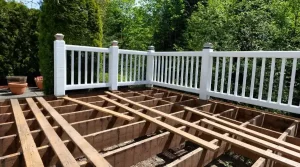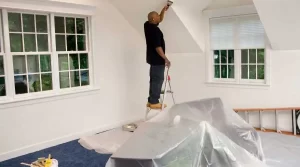Are you ready to embark on a thrilling home renovation journey? Renovating your home can be an exciting and rewarding experience, but it’s essential to approach it with proper planning and organization. In this guide, we will walk you through the crucial steps to ensure a seamless and successful renovation process that could save you time, money and your sanity.
Start With Design and Planning
Before diving into your home renovation, take the time to create a solid plan. Whether it’s a simple renovation wishlist on a piece of paper, or detailed architectural plans in blueprint, having a clear vision of your remodel is vital. Consider your budget and ensure you have sufficient funding for the project.
Create a list of do-it-yourself projects that you could do yourself and those that might require professional assistance. Research and find contractors and subcontractors for the tasks you’d prefer not to handle yourself. If permits are necessary, apply for them accordingly, or rely on your hired contractor to take care of this process.
Consider the Bigger Projects
Tackling significant projects should be your priority, as they can impact the subsequent renovations later on. Check and fix any roof replacement or repairs, foundation issues, water infiltration problems, and window and siding installations or repairs first.
Secure the foundation and make any necessary repairs to ensure the structural integrity of your home. Next, focus on the roof, siding, and windows. Replace damaged elements that could threaten future remodeling work. Address any serious issues promptly, but leave minor repairs for later stages.
Plan for Demolition
Demolishing parts of your home that will be replaced in later stages is a substantial undertaking that requires careful planning. Rent a large container for waste disposal and demolish the areas designated for renovation. If you won’t be living in the house during this process, consider demolishing as much as possible to expedite the project.
Think About Structural Carpentry
Structural carpentry involves supporting other renovation work. This includes moving or constructing walls, adding beams for additional support, resizing doors, and enlarging window openings. While some projects can be DIY endeavors, seeking professional assistance, especially for enlarging window openings, is advisable.
Plan Out HVAC, Electrical, and Plumbing Jobs
Installing HVAC systems, electrical wiring, and plumbing should be done when the walls and ceilings are open. This provides easy access for installation and ensures a well-functioning home. Depending on your location, building regulations and codes may require professional handling of these tasks, so be sure to follow the regulations.
Consider the Windows
Window installation is a critical part of any home remodel. Whether you’re replacing windows partially or throughout the house, ensure you adhere to the manufacturer’s guidelines to maintain warranty validity. If needed, hire a professional for window installation to prevent future headaches.
Plan Out Insulation and Drywall
Insulating your home before installing drywall is essential for energy efficiency and comfort. Plan and select appropriate insulation types for different areas of your home. Once the insulation is in place, you can proceed with drywall hanging, mudding, and sanding. If confident, you can take on this task yourself, but hiring professionals ensures a smooth finish.
Brush up on Fine Carpentry Skills
Fine carpentry details, such as baseboards, molding, and trim, add the finishing touch to your home. Take your time with this part to achieve a polished and elegant look.
Move on to Interior Painting, Wallpaper, and Other Finishing Work
Interior painting and wallpapering should be among the final tasks indoors to avoid damaging other components. Consider whether to paint before or after installing or sanding the flooring, and plan accordingly. Attention to detail during this stage can make a significant difference in the overall aesthetics of your home.
Flooring Installation
Your choice of flooring varies according to each room’s function and style. Ensure flooring installation is done toward the end of the renovation process to protect the surface from potential damage.
Move to the Exterior
As the interior nears completion, it’s time to focus on the exterior of your home. Install gutters and siding, taking care not to compromise the work done inside. Consider adding external renovations like a front porch or sunroom, or plan for separate structures like garages or swimming pools.
By following these organized steps, your home renovation journey will be smooth, rewarding, and stress-free. Remember to consult professionals for tasks beyond your expertise, adhere to building codes, and enjoy the transformation of your beloved home. Happy renovating!







